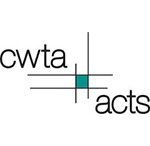Posted: Oct 27 '16
Winter - Risky Business

Working in Alberta you have to be prepared to work smart and stay safe in extreme winter temperatures. At MI Safety we have a variety of online courses to help you properly prepare for winter. Dressing properly, staying alert to hazards and taking proper precautions is an important part of our winter routines.
Staying Warm:
-
Dress in layers
- Spend the extra money on quality winter clothing
- Make sure your feet stay dry
- If possible, avoid breaking a sweat. If your job results in sweating, fabrics that wick moisture away from your body are important
- Take breaks indoors or in a warm place
- Where possible, complete work in a sunny area
- Wear a tight pair of gloves under your regular gloves so your skin is always covered even if you have to remove a bulky glove temporarily
Caution: Bulky winter wear can cause hazards
-
Ensure clothing is fitted so you are less likely to get it caught in structures or moving equipment
- If you’re buying larger footwear to accommodate extra socks, only wear that footwear when you are wearing the extra clothing, to prevent tripping and stumbling
- You will have to be more aware of your footing, especially when stepping over items to ensure you do not trip. Walk around where possible
- Research the material used for your grips on your footwear. Some material hardens and can be extremely slippery on metal surfaces or ice.
- Ensure your headwear does not block your peripheral vision
- Breathe in through your nose and out through your mouth to prevent eye protection from fogging up. Invest in anti-fog eye protection or use a spray to make current protection anti-fog
- The length of your coveralls or snow pants matter. If they are too long it can be heavy to carry around and reduce your mobility. Get clothing that fits as closely to your build as possible and consider a belt on the outside of snow pants, under your jacket, to help hold up the weight of your snow pants. Ensure the belt does not cause an additional hazard by hanging free where it could get caught in moving machinery.
Be Alert To:
- Shivering to violent shivering
- Frost nip and frost bite
- Loss of coordination, difficulty moving fingers, hands and toes to slow difficult movement
- Trouble focusing, thinking, confusion and amnesia
- Tingling and numbness
- The “umbles” – stumbles, mumbles, grumbles and fumbles
A First Aid course can help you and employees properly identify and respond to cold related emergencies.
Employers
Employers have an obligation to provide a safe working environment, including having a plan to control or eliminate dangers associated with working in the cold. As an employee you are obligated to abide by that plan and to identify or eliminate hazards you encounter.
Slips are a significant contributor to injuries. Everybody must work together to ensure walkways are free of excessive snow build up and ice. Employers can consider using a buddy system so people can look out for each other’s safety and spell each other for warm up breaks. Providing shelters with heat can keep employees warm and motivated.
Contact us at MI Safety for site specific training courses - and stay warm this upcoming winter!
REQUEST INFO ON OUR COURSES





